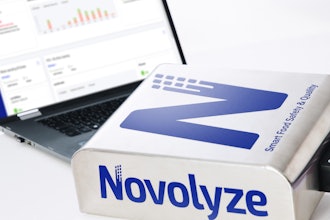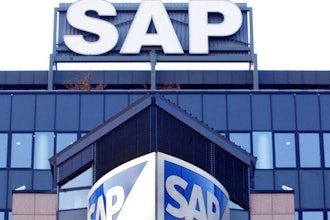Disruptions to shop floor operations are seldom fixed on the spot as they once might have been, with a screwdriver and a roll of duct tape, and perhaps a length of coat hanger. Complicating these disruptions is a combination of sophisticated IT systems, a reliance on the cloud, as-a-service, and colocation which moves those systems and processes to off-site locations, and the fact that modern manufacturing is a complex and non-linear ecosystem.
In that environment, even a small disruption to shop floor operations can have a big impact on production, especially in a highly automated, technology-driven manufacturing environment with a global supply chain.
Continuity in the Manufacturing Cloud
Complicating the continuity question is the fact that the manufacturing process has transformed into a manufacturing cloud, with a growing ecosystem of global third-party suppliers and contract manufacturers. The old, completely vertical market that Ford was so well known for in its heyday no longer exists, and is no longer practical. A manufacturing operation is no longer defined by its physical plant — and that reality has driven tremendous efficiencies and opened up new possibilities. But at the same time, it forces us to re-visit the continuity plan.
As that cloud ecosystem continues to expand, risks may appear to be outside of the manager’s immediate control. A risk-averse manager may for example, choose to avoid using a contract manufacturer in Tamil Nadu. Despite robust contract facilities being common to that region, the U.S. manager may feel out of touch due to language barriers, time differences or a perception of substandard process. Those fears may cause a manufacturer to pull back on the global ecosystem, ultimately foregoing potential advantages of manufacturing closer to emerging Asian markets, gaining access to an affordable and highly skilled workforce, and enjoying higher and more flexible production capacity than would be possible from the U.S.-based plant alone.
In the manufacturing cloud, risk still exists, it just exists elsewhere, but with the right approach can still be managed effectively. For example, what happens when the contract facility in Tamil Nadu stops production for some reason? You have a contract with another plant in Ho Chi Minh City to provide backup services.
Continuity Extends Into the Ecosystem
While it may seem that the vertical model touted by Henry Ford makes continuity planning easier — after all, everything is in your reach — this falls into what is known as the “fallacy of direct control,” or incorrectly believing that if you can touch it, you can control it and it’s going to be better. It’s just not true anymore.
No company, regardless of how experienced their executives and staff may be, can be expert in everything. Instead, the better model is to focus on our core expertise, for example, marketing is left to a marketing agency, specialized manufacturing left to another niche firm, and risk management and continuity planning to those with specialized expertise in that area.
In this type of manufacturing ecosystem, it’s important to not only deliver continuity internally, but to ensure that all of your partners have some continuity procedures in place as well. This is precisely why continuity planning can’t just be about the plan, it must be about the process of planning. Do you have a continuity plan in a drawer somewhere? Check. Do all of your partners have continuity plans in their drawers somewhere? Check. Unfortunately, as your manufacturing ecosystem gets larger and you take on more global partners, all those carefully written plans, sitting in drawers all over the world, become more and more useless.
It’s Not the Plan, it’s the Process That Counts
A plan is simply a static document which may be relevant at a single point in time, but the moment the plan is complete, it starts to become obsolete. In an automated environment, processes change quickly — often far more quickly than does the continuity plan itself. A more modern approach forgoes the traditional continuity plan, which is created at great expense and by a small committee, as a one-time project; instead approaching it as a continuous process, which is created with input from everyone from the CEO down to workers on the shop floor. Most importantly, getting cooperation from those stakeholders is achieved through making continuity and risk management a process which every person understands, is involved directly in, and wants to participate in the creation of.
A powerful approach that has yielded significant results is to use tactics such as gamification to make the need more real, and make participation something that, contrary to the usual approach, stakeholders don’t actively place on the bottom of their priority list.
The manufacturing continuity plan itself — even if all your partners have agreed to also create continuity plans — is far less important than is the actual process of creating it, and the plan is merely a by-product of the planning. The real value is in the planning process, which gives us an opportunity to simplify complexity, build common ground, and gain the cooperation and mindshare of everyone from the C-suite to the shop floor.
Sean Murphy is CEO of Lootok.























